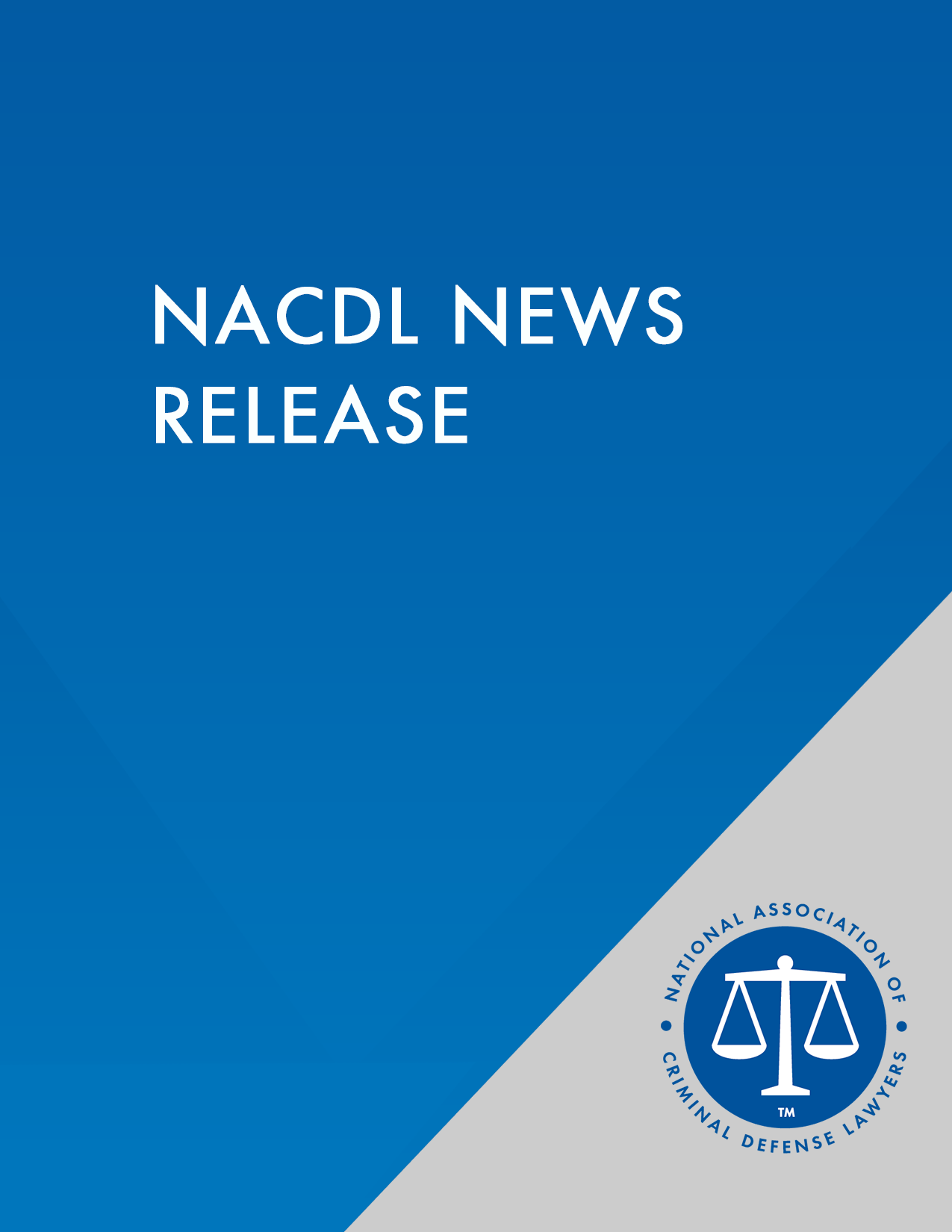Washington, DC (September 26, 2007) – The announcement yesterday by the U.S. Supreme Court that it will review lethal injection protocols and the release Monday of a report from the American Bar Association on Ohio’s death penalty laws and procedures[1] are further reasons why the United States needs to impose an immediate moratorium on all state and federal capital trials and executions, the President of the National Association of Criminal Defense Lawyers said today.
“We cannot continue to use a broken system and blithely expect justice,” said Carmen Hernandez, the association’s president. “It doesn’t work that way. The 89-odd problems the ABA identified in the Ohio system prevail throughout the other 37 death penalty states, and the federal system too.”
A number of the recommendations in the report, such as eyewitness identification reform, recording of custodial interrogations, preservation of evidence and adequate funding for defense services, should be applied to all cases to lessen the probabilities of wrongful convictions. NACDL has been a leader throughout the country in the push to implement these basic reforms in all cases.
Hernandez noted further that the failures of capital punishment include even the preferred method of execution. “Lethal injection is anything but humane. The condemned do not just go to ‘sleep.’ Animals are treated better – lethal injection is a cocktail of poisons.”
Botched lethal injections are not just a possibility, but a horrible reality, as more and more prisoners die in agony, she said. The Toledo Blade reported that it took Ohio authorities an hour and a half to kill Joseph Lewis Clark last May after repeated injections. Toward the end he protested, “It don’t work.”
Those who witnessed Clark's execution saw a procedure that typically lasts approximately 10 minutes drag into one that lasted 86 minutes.
The execution team struggled for 25 minutes to find usable veins in Clark's arms before making the decision to proceed with just one intravenous shunt in his left arm.
After uttering his final words, Clark lay extremely still, breathing shallowly.
A witness described the scene as one where Clark appeared to have fallen asleep, except for the occasional movement of his feet.
But after a few moments, Clark raised his head, shook it back and forth, and repeatedly declared, "It don't work."….
The execution team then closed a curtain to block witnesses' view of the execution chamber, but witnesses -- including Mr. Manning -- said Clark's moans and groans were audible through the glass.[2]
“We are certainly gratified to see that the U.S. Supreme Court yesterday decided to look into lethal injection procedures,” Hernandez said, referring to the Court’s announcement that it would review Kentucky’s lethal injection protocols in Baze v. Rees, No. 07-5439. “There is no humane way to execute a human being. If we are going to persist in this barbaric form of punishment, we cannot allow it to be imposed in a manner that inflicts unnecessary pain and suffering on the condemned person.”
“The entire death penalty system itself, from arrest onward, is so flawed that the states and the federal government must declare an immediate moratorium on capital prosecutions and executions until thorough analyses of every stage and every procedure have been conducted. Whatever one’s views on capital punishment, every jurisdiction needs to provide a system that is fair, objective and adequately funded, with zero margin of error. Nothing less should be acceptable to anyone.
“The Ohio Death Penalty Assessment Report is an outstanding study model for all death penalty jurisdictions.”
1 American Bar Ass’n, Evaluating Fairness and Accuracy in State Death Penalty Systems: The Ohio State Death Penalty Assessment Report, September 2007 (495 pages), available at http://www.abanet.org/moratorium/assessmentproject/ohio/finalreport.pdf. An executive summary of the report is available at http://www.abanet.org/moratorium/assessmentproject/ohio/executivesummary.pdf.
2 Erica Blake, “Family Sues Over Botched Ohio Execution,” The Blade [Toldedo, OH], 7/3/07.
Contacts
NACDL Communications Department
The National Association of Criminal Defense Lawyers is the preeminent organization advancing the mission of the criminal defense bar to ensure justice and due process for persons accused of crime or wrongdoing. A professional bar association founded in 1958, NACDL's many thousands of direct members in 28 countries – and 90 state, provincial and local affiliate organizations totaling up to 40,000 attorneys – include private criminal defense lawyers, public defenders, military defense counsel, law professors and judges committed to preserving fairness and promoting a rational and humane criminal legal system.





